Smart move: an 18th-century townhouse has been revived as Mayfair’s grandest gallery
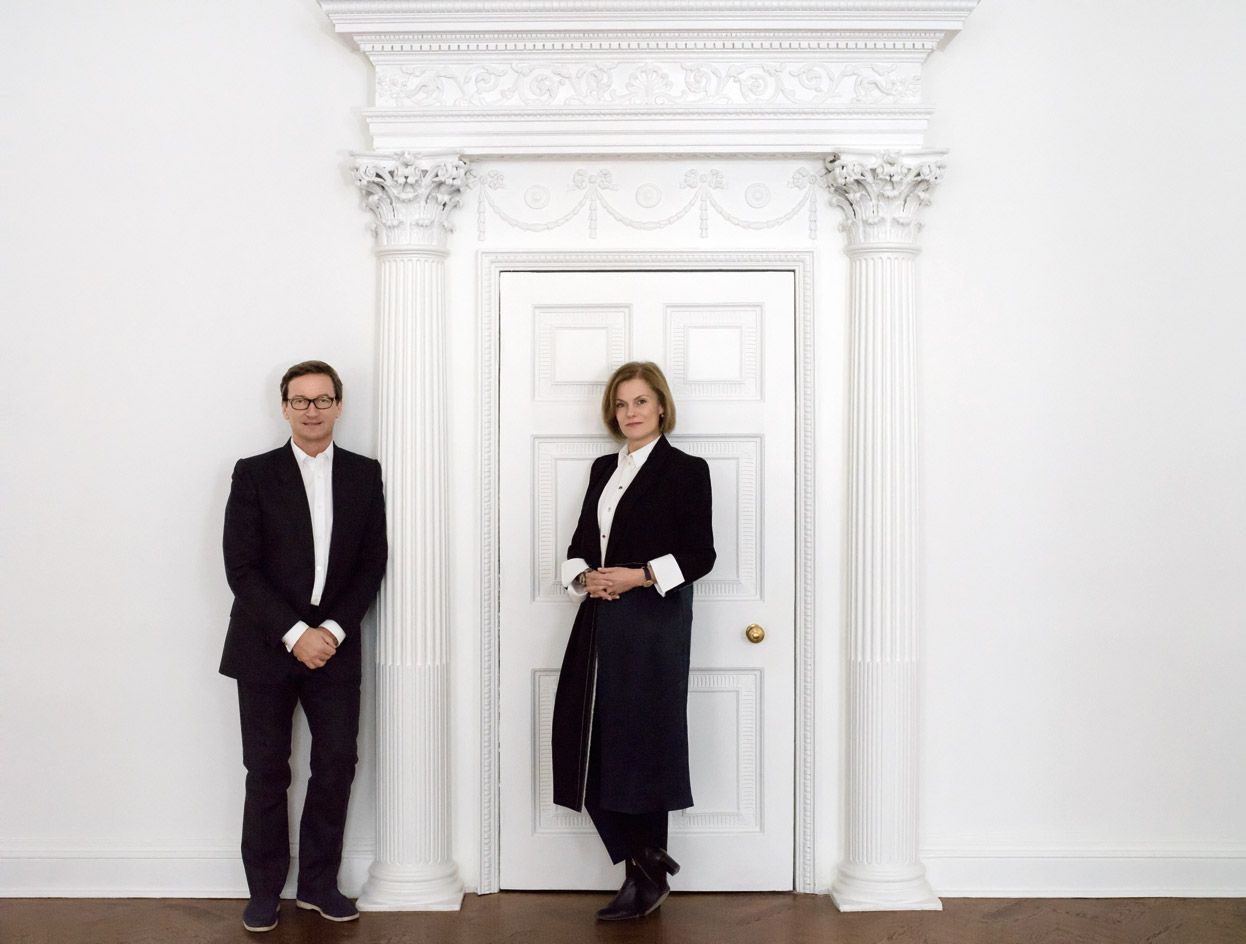
Last June, the Austrian gallerist Thaddaeus Ropac was stepping off a flight to Madrid when he received a call from an estate agent in London, informing him that Ely House in Mayfair was up for rent. ‘I knew the building from a previous visit and totally fell for it,’ Ropac says. ‘So when the confirmation of availability came, I knew I had to act immediately.’ Ropac jumped straight back on a plane to London, then got stuck in terrible traffic and turned up at Ely House at 6.55pm. All the lights were off and he was told viewings finished at 7pm. ‘I said, “I’m sorry, but it’s five to. I can make up my mind in five minutes.” And I did.’
Now he’s like the cat that got the cream. He fended off a members’ club, a fashion house and various hedge funders to acquire the lease on the former Bishop of Ely’s residence on Dover Street. When the building reopens in April as Ropac’s first London gallery, it will have undergone a vigorous makeover courtesy of New York-based architect Annabelle Selldorf and will be a reassuring post-Brexit addition to W1.
Like much of Mayfair, Ely House has a long and chequered history. Built in 1776 by the leading architect Sir Robert Taylor, it has played host to everyone from clergymen to writers, poets, suffragettes, American GIs, bankers and furniture dealers, each bringing with them architectural baggage that Ropac has had to unpick.
‘One of the challenges was getting a sense of what we could and couldn’t do,’ he says from the former Bishop’s library on the first floor. Ely House has Grade 1 listed status, so Ropac had English Heritage as well as Westminster Council to contend with. Plus, he wanted the conversion done in under a year. ‘When I told all this to my friends in Paris [home to his two main galleries], they said, “You must be joking.” But the English are very pragmatic compared with the French. In France, this time frame would be impossible.’
Between 1908 and 1939, Ely House was home to the Albemarle Club, a meeting place for aesthetes, artists and intellectuals. As the first private members’ club to (somewhat scandalously) accept women in 1874, it was a hotbed of avant-garde thinking, upper-class intrigue, and the unofficial headquarters of the women’s suffrage movement. To accommodate the club’s move from Albemarle Street to Ely House, British architects Smith & Brewer carried out a much-lauded renovation in 1910. Later, during the Second World War, the American Red Cross moved in, followed by a string of companies that all made hotchpotch alterations of their own.
Ropac enlisted the help of Nick Cowie, of Cowie Montgomery Architects, and the detective work began. Cowie’s examination uncovered all the post-1939 alterations that had to go, such as fake Georgian mouldings from the 1970s, postmodern clutter and 1990s monstrosities. ‘We identified every moulding; every piece of panelling was discussed,’ says Cowie.
With such a weighty history behind it, Selldorf knew her job – making Ely House ‘more low key and taking the shine off’ – would be a sensitive balancing act. ‘It’s an important building, but we had to make spaces where the art can be shown as the hero,’ she says. Flamboyant cornicing and excessive panelling and moulding were not an option.
She also knew that Ely House would need ‘less drama,’ a ‘quieter presence’ and improved circulation. Anyone who knows the house will recall getting lost while hunting for one of its tiny bathrooms, or stumbling through a poky door into a dingy, empty room. Selldorf adds, ‘Furniture dealer Mallett [which moved out last year] was aware of the phenomenal property it occupied, but others covered the chandeliers and the cupola, added fake walls and bad joinery. That all takes some time to undo.’

The grand main staircase of Ely House
Ropac is the latest in a long line of mega-dealers to hire Selldorf. In 2012, she fashioned a gallery from a nearby Mayfair townhouse for David Zwirner, and she counts Per Skarstedt, Michael Werner, Iwan Wirth and Larry Gagosian as clients and friends. Before Ely House cropped up so unexpectedly, Ropac had signed the lease on a different Mayfair property and hired Selldorf to renovate it. Ropac explains, ‘I could have chosen someone else, but I just trust Annabelle.
She understands the DNA of old buildings and knows how to adapt them for 21st-century use. Look at her Neue Galerie in New York, and what she’s suggesting for the Frick Collection.’ (Her practice will reveal its designs for the 1914 art mansion in Manhattan this autumn, having replaced an ousted firm.)
How does it feel to be the dealers’ go-to architect? ‘People may think, “Why does the art world all want the same thing?” But we don’t do the same thing for everyone,’ Selldorf says from her office in New York.
Ely House had an astonishing 72 separate spaces before Selldorf stepped in. Many of these have been opened up to improve circulation and maximise wall space. Sticky carpets have been replaced with parquet flooring, the original chandeliers have been rehung and the central cupola has been uncovered, revealing its delicate filigree ironwork. Both staircases have been restored and, for the entrance, Selldorf has created a bespoke reception desk in black Belgian marble.
Ropac also took a lease on the first floor of a former bank building in Berkeley Street, which backs on to Ely House. Selldorf has knocked through, so now visitors are greeted with a 60m vista stretching from Dover Street through to Berkeley Street. The room has been tagged the Berkeley Gallery and will show works by British artist Oliver Beer when it opens.
At Ropac’s invitation, Beer was in residence in the basement while Ely House was being renovated; he spent six months surrounded by pots, a keyboard and sliced-up violins, working on pieces for the opening. The artist first met the gallerist at the 2014 Lyon Biennale, where Beer had two countertenors singing in a building site. ‘Thaddaeus came up and asked me if he could buy the piece,’ he says. ‘I had no idea how to sell two tenors and a building site, but I said yes anyway.’
For the opening of Ely House, Beer will place an ensemble of singers among the columns and vaults, where they will belt out notes that pick up its in-built frequencies and resonate loudly. ‘While the house has undergone many changes, it has always had a fixed volume and the notes that resonate haven’t changed for nearly three centuries,’ says Beer. What’s more, together these create a diabolus in musica – dissonant notes that were banned in the Middle Ages for their association with the devil. ‘Robert Taylor built them in without he or the Bishop realising it.’
Of the four exhibition spaces within the house, the heavily panelled Ely Gallery is the most challenging. Gilbert & George’s drinking pieces and video sculptures from the early 1970s will be the first works on show. Ropac has known Gilbert & George for 30 years and persuaded them to also exhibit the two green armchairs, taken from their house in Spitalfields, in which they sat and recorded their misdemeanours.
The high-ceilinged first-floor Library Gallery will host works by American masters of the conceptual and minimal movements, from the Marzona Collection. A lead sculpture by Richard Serra and one of Donald Judd’s earliest Cor-ten steel stacks are set among pieces by Dan Flavin, Fred Sandback and Sol LeWitt.
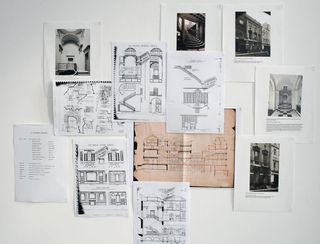
Detailed analysis of the house and its history informed the plans
In his twenties, Ropac wanted to be an artist and did a stint at Joseph Beuys’ studio in Berlin. Beuys wrote him a one-line letter of introduction to Andy Warhol, which led him to New York and a party scene frequented by Jean-Michel Basquiat, Keith Haring and Robert Mapplethorpe. Ropac has been loyal to Beuys and his widow ever since, and a selection of the German artist’s early drawings and a sculpture will be on show in the Chapel Gallery.
All four galleries in Ely House are challenging in their own ways; executive director Polly Robinson Gaer will fly artists in twice, so they can better react to the space. The 1,500 sq m outpost is far more complex than Ropac’s 5,000 sq m gallery in Pantin, Paris, a former ironworks with uncomplicated walls and minimal historical cachet. ‘It is a difficult space and we don’t want to take the easy route,’ says Robinson Gaer.
Ropac opened his first gallery in Salzburg in 1983, when he was 23. He has two galleries in the city: Villa Kast, a 19th-century townhouse, and Halle, an industrial building in the city centre. In Paris, Ropac also pairs the historical and the industrial, with a four-floor gallery in the Marais, as well as Pantin.
London, or rather Mayfair, was always the next stop. ‘We drew up a plan and gave it to the estate agent. Nowhere the other side of Regent Street. Definitely not St James’s,’ Ropac says. The redeveloped Cork Street was also out. ‘It’s the DNA of the British gallery world, but the new development is very corporate. It’s a Chelsea, New York, type of idea, but without the generosity.’ Consisting of luxury flats on upper floors and galleries at ground level, the development is highly controversial, as many long-term dealers have been forced out by high rents.
‘I always stay at Claridge’s,’ Ropac says. ‘I see a few shows, but never venture south of Piccadilly or across Regent Street. There are some good galleries in Soho, but it’s a trip.’ His route echoes that of many collectors, who move between The Ritz, Claridge’s and The Connaught. ‘I know their footprint. And if I don’t go any further than that, why would they?’
So what’s next? New York? Hong Kong? ‘There is no next,’ Ropac says. ‘All my energy and dreams are in London. I couldn’t have imagined coming to Mayfair and finding the perfect space. This is luck.’
As originally featured in the April 2017 issue of Wallpaper* (W*217)
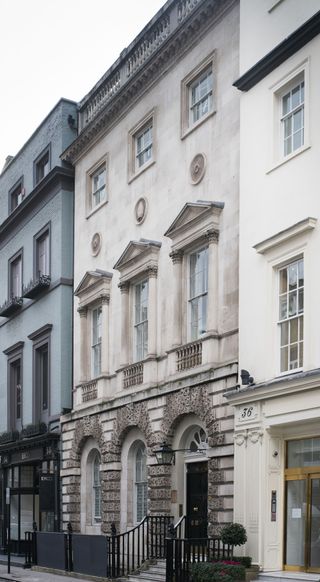
The Grade I-listed Ely House has been reconfigured by New York architect Annabelle Selldorf.
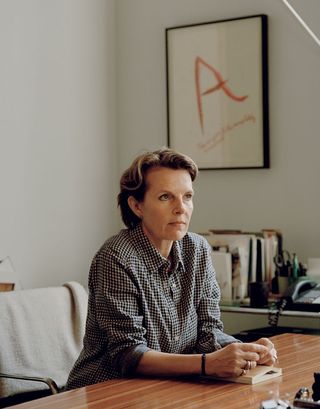
Architect Annabelle Selldorf in her New York studio
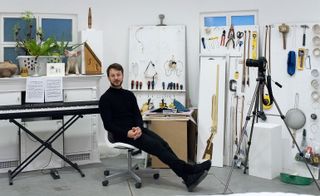
Multimedia artist-in-residence Oliver Beer in his temporary studio in the basement of Ely House.
INFORMATION
For more information, visit the Galerie Thaddaeus Ropac website
Wallpaper* Newsletter
Receive our daily digest of inspiration, escapism and design stories from around the world direct to your inbox.
Emma O'Kelly is a freelance journalist and author based in London. Her books include Sauna: The Power of Deep Heat and she is currently working on a UK guide to wild saunas, due to be published in 2025.
-
 Six hotels where you’ll find the winter sun this February
Six hotels where you’ll find the winter sun this FebruaryFrom intimate seaside inns to lush tropical resorts, here are six Wallpaper*-approved winter sun escapes
By Sofia de la Cruz Published
-
 Isamaya Ffrench’s new make-up collection is infused with skincare: here’s how to use it
Isamaya Ffrench’s new make-up collection is infused with skincare: here’s how to use itIsamaya Ffrench’s namesake beauty line Isamaya Beauty has just dropped Core Collection, a new range of skincare-infused make-up products. Here’s what they are (and how to use them)
By Hannah Tindle Published
-
 Met Gala 2025 and ‘Superfine: Tailoring Black Style’ exhibition: everything we know so far
Met Gala 2025 and ‘Superfine: Tailoring Black Style’ exhibition: everything we know so farEverything Wallpaper* knows about the Met Gala 2025 so far – from the just-revealed dress code to the exhibition theme and A-list co-chairs
By Anna Solomon Published
-
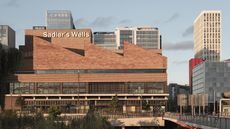 Sadler’s Wells East opens: ‘grand, unassuming and beautifully utilitarian’
Sadler’s Wells East opens: ‘grand, unassuming and beautifully utilitarian’Sadler’s Wells East by O’Donnell and Tuomey opens this week, showing off its angular brick forms in London
By Tom Seymour Published
-
 2025 Serpentine Pavilion: this year's architect, Marina Tabassum, explains her design
2025 Serpentine Pavilion: this year's architect, Marina Tabassum, explains her designThe 2025 Serpentine Pavilion design by Marina Tabassum is unveiled; the Bangladeshi architect talks to us about the commission, vision, and the notion of time
By Ellie Stathaki Published
-
 We celebrate the emerging London architects to be excited about
We celebrate the emerging London architects to be excited aboutThese emerging London architects are some of the capital's finest ground-breakers, movers and shakers; heralding a new generation of architecture
By Ellie Stathaki Published
-
 From a mobile pub to a thatched canopy: Japanese architecture and craft explored at AA show in London
From a mobile pub to a thatched canopy: Japanese architecture and craft explored at AA show in London'Distillation of Architecture', a new AA show in London, pairs architects with materials and makers in an exploration of craft through the Japanese lens
By Ellie Stathaki Published
-
 A library in a London telephone box? This is a charming reading nook full of surprises
A library in a London telephone box? This is a charming reading nook full of surprisesSet in a restored London telephone box, Upper Street Little Library is a cosy beacon to encourage reading to the wider community
By Tianna Williams Published
-
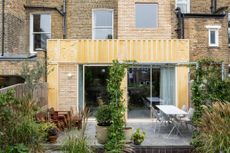 This revamped east London terraced house is a music lover’s dream
This revamped east London terraced house is a music lover’s dreamAn east London terraced house gets a boost of personality and sustainability thanks to Archmongers, whose transformation makes room for the owners’ creativity and extensive record collection
By Léa Teuscher Published
-
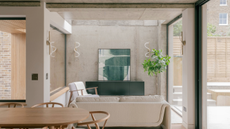 This elegant infill project slots beautifully into the London streetscape
This elegant infill project slots beautifully into the London streetscapeIn this infill project, a row of garages in Blackheath, south-east London, has been replaced by a contemporary family home by local practice Mailen Design
By Léa Teuscher Published
-
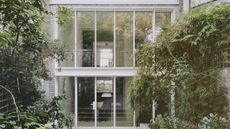 Don’t Move, Improve 2025: the 14 London homes adding design oomph to the everyday
Don’t Move, Improve 2025: the 14 London homes adding design oomph to the everydayThe shortlist for Don’t Move, Improve 2025 has been announced, revealing 14 residential projects across London that add value and pizazz to their inhabitants’ daily lives
By Ellie Stathaki Published